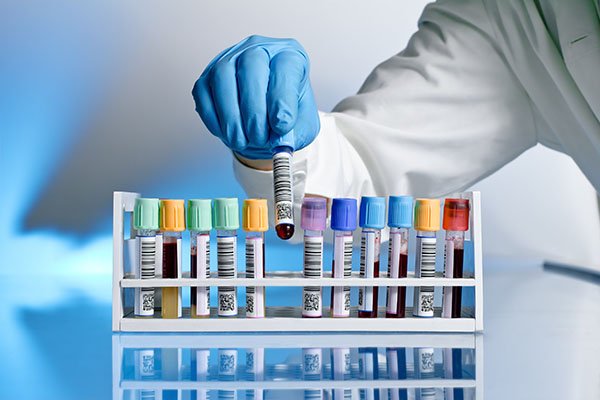Preparing Hospitals for Extreme Weather Events: Strategies for Ensuring Supply and Equipment Availability
Summary
- Hospitals must plan ahead for extreme weather events caused by climate change in order to ensure adequate supply and equipment availability.
- Implementing strategies such as diversifying suppliers, creating contingency plans, and investing in technology can help hospitals mitigate the impact of extreme weather events.
- Collaboration with other healthcare facilities and government agencies is crucial in preparing for and responding to extreme weather events.
Introduction
Managing hospital supply and equipment during extreme weather events caused by climate change is a critical challenge facing healthcare facilities in the United States. With the increasing frequency and severity of hurricanes, wildfires, and other extreme weather events, hospitals must be proactive in implementing strategies to ensure sufficient supply and equipment availability to meet patient needs. In this article, we will discuss various strategies that hospitals can implement to prepare for and respond to extreme weather events.
Diversifying Suppliers
One of the key strategies that hospitals can implement to ensure sufficient supply and equipment availability during extreme weather events is to diversify their suppliers. Relying on a single supplier for critical medical supplies can lead to significant disruptions in the event of a natural disaster or other emergency. By working with multiple suppliers, hospitals can reduce the risk of Supply Chain disruptions and ensure continuity of care for patients.
Benefits of Diversifying Suppliers
- Reduced risk of Supply Chain disruptions
- Greater flexibility in sourcing medical supplies
- Improved ability to negotiate pricing and terms with suppliers
Steps for Diversifying Suppliers
- Identify critical medical supplies that are sourced from a single supplier
- Research and identify alternative suppliers for these supplies
- Establish relationships with new suppliers and negotiate contracts for supply agreements
Creating Contingency Plans
In addition to diversifying suppliers, hospitals should also create contingency plans to ensure supply and equipment availability during extreme weather events. Contingency plans outline the steps that hospitals will take to maintain operations and provide care to patients in the event of a natural disaster or other emergency. These plans should be regularly reviewed and updated to reflect changes in the hospital's operations and Supply Chain.
Key Components of Contingency Plans
- Identification of critical supplies and equipment
- Protocols for monitoring supply levels and restocking inventory
- Procedures for activating emergency supply chains
- Communication plans for coordinating with suppliers, staff, and other healthcare facilities
Testing and Training
It is important for hospitals to regularly test and train staff on their contingency plans to ensure that they are effective in responding to extreme weather events. This includes conducting tabletop exercises, simulated drills, and other training activities to prepare staff for emergencies.
Investing in Technology
Another important strategy that hospitals can implement to ensure sufficient supply and equipment availability during extreme weather events is to invest in technology. Technology can help hospitals better track and manage their inventory, streamline Supply Chain processes, and improve communication with suppliers and staff.
Benefits of Technology
- Real-time monitoring of supply levels and expiration dates
- Automated ordering and restocking of inventory
- Improved visibility into Supply Chain performance and risks
Examples of Technology Solutions
- Inventory management software
- Supply Chain analytics tools
- Electronic medical record systems with inventory tracking capabilities
Collaboration with Other Healthcare Facilities and Government Agencies
Collaboration with other healthcare facilities and government agencies is crucial in preparing for and responding to extreme weather events. Hospitals should work closely with other Healthcare Providers, emergency management agencies, and local authorities to coordinate emergency response efforts, share resources, and communicate critical information.
Benefits of Collaboration
- Access to shared resources and expertise
- Improved coordination of emergency response efforts
- Enhanced ability to meet patient needs during natural disasters
Examples of Collaboration Efforts
- Participating in regional healthcare coalitions
- Sharing best practices and lessons learned with other healthcare facilities
- Coordinating with emergency management agencies to develop comprehensive response plans
Conclusion
In conclusion, hospitals in the United States must be proactive in implementing strategies to ensure sufficient supply and equipment availability during extreme weather events caused by climate change. By diversifying suppliers, creating contingency plans, investing in technology, and collaborating with other healthcare facilities and government agencies, hospitals can better prepare for and respond to natural disasters and other emergencies. It is essential for hospitals to prioritize Supply Chain resilience and emergency preparedness to ensure the continued delivery of high-quality care to patients in the face of increasing climate-related challenges.

Disclaimer: The content provided on this blog is for informational purposes only, reflecting the personal opinions and insights of the author(s) on the topics. The information provided should not be used for diagnosing or treating a health problem or disease, and those seeking personal medical advice should consult with a licensed physician. Always seek the advice of your doctor or other qualified health provider regarding a medical condition. Never disregard professional medical advice or delay in seeking it because of something you have read on this website. If you think you may have a medical emergency, call 911 or go to the nearest emergency room immediately. No physician-patient relationship is created by this web site or its use. No contributors to this web site make any representations, express or implied, with respect to the information provided herein or to its use. While we strive to share accurate and up-to-date information, we cannot guarantee the completeness, reliability, or accuracy of the content. The blog may also include links to external websites and resources for the convenience of our readers. Please note that linking to other sites does not imply endorsement of their content, practices, or services by us. Readers should use their discretion and judgment while exploring any external links and resources mentioned on this blog.

